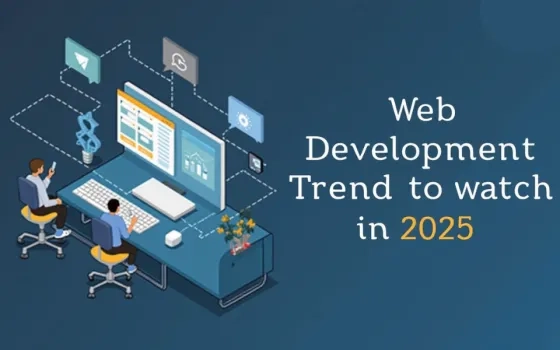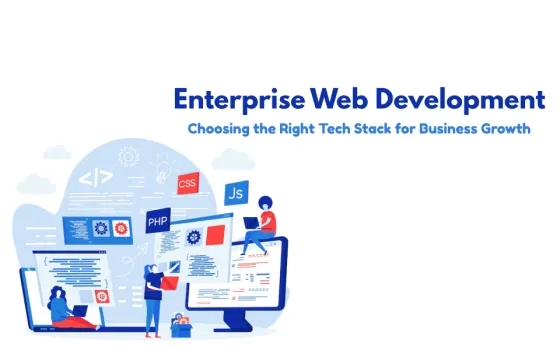Are you planning to join the DevOps realm? This guide will offer you the necessary tools and tips for a successful DevOps execution in your organization. It covers topics from basic concepts to implementations. Regardless if you are a novice or veteran in the field, this guide will provide you with a valuable overview of DevOps. Let's jump right in!
What is DevOps?
DevOps is a method of IT that promotes close collaboration between development and operations teams to boost the rate, quality, and dependability of software programs. By connecting these two aspects of the software production cycle, organizations can achieve better results in a shorter time frame. The term "DevOps" is derived from the integration of "development' ' and "operations' ', placing focus on automation processes and team cooperation. This practice depends on automation instruments to assist in consistent software delivery, enabling speedy feedback loops. With this tactic, developers and operations staff can collaborate to detect and mend problems before they develop into more severe issues. In conclusion, companies can iterate their software products more quickly and implement them in a more cost-effective way.
What are the benefits of DevOps?
1. Improved Efficiency: By automating many processes and tasks, DevOps reduces the amount of manual labor needed for IT operations and enables teams to do more with fewer resources. This improves efficiency and allows teams to focus on more strategic initiatives.
2. Faster Delivery: Precisely, DevOps accelerates the software delivery cycle by streamlining the process from development to production. This enables teams to quickly and safely roll out new features and fixes with minimal disruption.
3. Increased Collaboration: DevOps fosters better collaboration between developers, operations teams, and other stakeholders, enabling them to work together more effectively and make informed decisions faster.
4. Cost Savings: By reducing manual labor, eliminating silos, and speeding up the delivery process, DevOps helps organizations cut costs and increase their bottom line.
5. Improved Quality: DevOps promotes continuous integration and testing, which helps ensure that code is tested and updated on a regular basis. This helps reduce errors and increases the overall quality of the product or service.
6. Greater Visibility: DevOps consequently provides greater visibility into the development process, allowing teams to identify potential problems before they become major issues. This helps teams stay on track and deliver projects on time.
What are the key stages of a DevOps transformation?
When it comes to DevOps, there are several key stages that should be followed in order to ensure a successful transformation.
1. Planning: The first step to any DevOps journey is planning. This involves understanding the goals and objectives of the transformation, the necessary tools and technologies needed, and the timeline for implementation.
2. Design: Once the planning phase is complete, it’s time to design the architecture and infrastructure that will enable the DevOps transformation. This includes selecting and configuring the appropriate technology and ensuring that all components work together properly.
3. Development: Consequently, during this phase, development teams create and test applications using DevOps tools and techniques. This includes automating the entire software delivery process from code creation to deployment.
4. Integration: After the application has been built, it needs to be integrated with other applications and systems in the environment. This requires establishing proper communication between different components and making sure everything works properly together.
5. Deployment: Finally, when everything is ready, the application can be deployed into production. During this phase, DevOps teams monitor the application’s performance and health, and make sure that it’s running as expected.
These five stages form the foundation of a successful DevOps transformation. Each stage requires careful planning and execution, and can be quite complex depending on the scale of the project. But with the right approach, teams can ensure that they are able to move smoothly through each stage of the DevOps journey and ultimately deploy a successful application into production.
How do you get started with DevOps?
DevOps is a robust approach to updating software development and delivery, yet it can be challenging to commence. The process of instituting DevOps encompasses multiple steps, ranging from preliminary organizing to ceaseless deployment. To ensure a prosperous transition, it is imperative to comprehend the several components of DevOps and how they work in collaboration.
The opening step to initiating DevOps is to construct a comprehension of its core tenets. This encompasses exploring the distinct procedures and technologies that constitute DevOps and attaining an appreciation for how they coexist. Additionally, it is advantageous to become acquainted with the different tools and services that are available to help accelerate the DevOps changeover.
When you have a basic comprehension of DevOps, the succeeding step is to decide how it will be carried out in your enterprise. This will necessitate analyzing the prevailing infrastructure and judging possible modifications that should be implemented. Furthermore, it is significant to design for how processes will be administered and managed, and what metrics need to be tracked.
After that, the subsequent step is to begin the real implementation of DevOps. This involves employing the essential technology and forming processes for supervising the changeover. It also encompasses configuring monitoring and logging systems, as well as automating the software development procedure. At last, it is indispensable to generate tactics for controlling change and quickly resolving issues as they emerge.
By pursuing these steps, enterprises can start to execute DevOps and enjoy all its advantages. With meticulous planning, application, and sustained direction, DevOps can deliver enormous worth by organizing software delivery and increasing the general effectiveness of an organization.
Also Read: Phases Of DevOps Lifecycle
What are some common challenges with DevOps transformations?
When it comes to the transition to DevOps, there are numerous potential issues that companies may come up against. Amongst these are the absence of team collaboration, not making the most of automation, having to quickly adapt to new technology and a lack of effective security.
First, there is the issue of teams not working together as effectively as possible. Development and operations often have their own sets of processes and it can be difficult for the organization to rapidly create and launch applications without these departments working in tandem.
Second, automation is essential for DevOps and the speed with which businesses can develop and roll out applications is directly impacted by the tools and technology they are using. If organizations are lacking the correct automation instruments or do not utilize them as much as they can, the result is inefficient deployment processes and a considerable amount of delays.
Third, companies will have to embrace modern technology like containers and microservices if they are to embrace DevOps. Whilst these solutions are a necessity, they can require technical knowledge and resources to be used successfully and as such organizations could face a sharp learning curve.
Fourth, the appropriate security measures must be implemented to ensure the protection of applications and data. Failing to secure the system and adhere to safety regulations could make it vulnerable to attack and could result in a data breach.
Precisely, these are the main challenges organizations may come across during the shift to DevOps but by carrying out comprehensive planning and thorough execution, it is possible for companies to rise above these problems and benefit from a successful transition.
What are some best practices for successful DevOps deployments?
- Automation is one of the pillars of success for any DevOps endeavor; automating processes like build and deployment pipelines, testing, and infrastructure provisioning lessens manual effort and hastens development cycles, plus guarantees that each release is devoid of mistakes and abides by quality criteria.
- Version control systems track changes in an application's codebase and helps us recognize what code is being deployed to different settings while keeping new versions from spoiling existing capabilities; they also make rollbacks simple in the event of errors.
- Monitoring performance of our applications after deployment is critical, and we can do so through the aid of APM tools or log monitoring instruments, recognizing any discrepancies prior to them becoming a bigger issue.
- Testing is key to guarantee quality in DevOps initiatives, which means that we should perform testing frequently, as early as possible, utilizing unit tests, integration tests, and regression tests for our CI/CD process.
- Ultimately, DevOps is an ongoing journey rather than a one-time event; measuring the efficacy of the procedure and effecting improvements where necessary maintains applications performing at optimal levels, preventing instability as time passes.
Conclusion
DevOps is an effective way of bringing development and operations teams together to make sure applications are delivered quickly and securely. To make the most of a DevOps transformation, following the practices outlined in this guide and hiring software developers in India with a comprehensive knowledge of DevOps principles is key. Organizations that invest the necessary resources and commitment to DevOps can benefit from enhanced productivity and greater business agility.




























